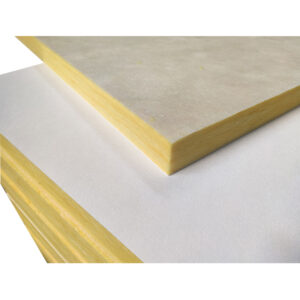Introduction
Acoustic ceilings are an essential component in creating optimal sound environments within rooms and spaces. They are specifically designed to enhance acoustics by addressing issues such as noise reduction, echo control, and sound absorption. In this article, we will explore how acoustic ceilings work and the ways in which they contribute to improving the acoustics of a room or space. Understanding these mechanisms will help architects, designers, and building owners make informed decisions when incorporating acoustic ceilings into their projects.
Sound Absorption
One of the key functions of acoustic ceilings is sound absorption. These ceilings are made from materials with high sound-absorbing properties, such as mineral fiber, gypsum, or specially designed acoustic panels. When sound waves hit the ceiling, the porous structure of the material converts the sound energy into heat, reducing sound reflections and preventing the buildup of excessive noise. Sound absorption helps to minimize echoes, reverberations, and background noise, resulting in a more comfortable and intelligible environment.
Noise Reduction
Acoustic ceilings also contribute to noise reduction by blocking or absorbing external sounds. They act as a barrier between the interior space and external noise sources, such as traffic, machinery, or neighboring rooms. The dense composition of acoustic ceiling materials helps to attenuate airborne sound transmission, reducing the impact of unwanted noise. This is particularly beneficial in buildings located in busy urban areas or environments with high noise levels, providing occupants with a quieter and more peaceful atmosphere.
Echo Control
Large, open spaces or rooms with hard surfaces can suffer from excessive echoes, resulting in poor speech intelligibility and an unpleasant auditory experience. Acoustic ceilings play a crucial role in controlling echoes by reducing sound reflections. The sound-absorbing properties of the ceiling material absorb and scatter sound waves, preventing them from bouncing off the ceiling and other surfaces. This leads to a balanced acoustic environment with improved speech clarity and reduced auditory fatigue.
Design Flexibility
Acoustic ceilings offer design flexibility without compromising acoustic performance. They come in various styles, textures, and colors, allowing architects and designers to create visually appealing spaces while optimizing acoustics. Suspended ceiling systems provide opportunities for incorporating lighting fixtures, air vents, and other services, ensuring a seamless integration of functionality and aesthetics. By combining effective sound control with attractive design options, acoustic ceilings contribute to creating harmonious and comfortable environments.
Conclusion
Acoustic ceilings play a vital role in enhancing the acoustics of a room or space. Through sound absorption, noise reduction, echo control, and design flexibility, these ceilings create environments that are conducive to clear communication, reduced noise distractions, and improved overall comfort. Whether in educational facilities, offices, healthcare settings, or entertainment venues, acoustic ceilings contribute to creating spaces where sound is controlled and optimized. Architects, designers, and building owners can leverage the benefits of acoustic ceilings to create acoustically pleasing and functional environments for their occupants.



